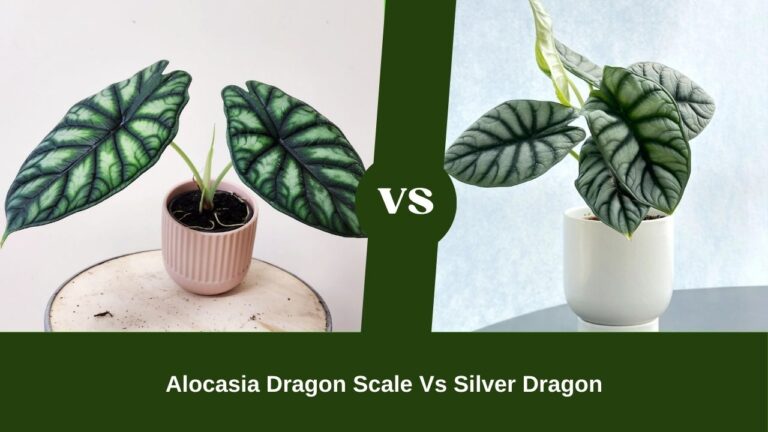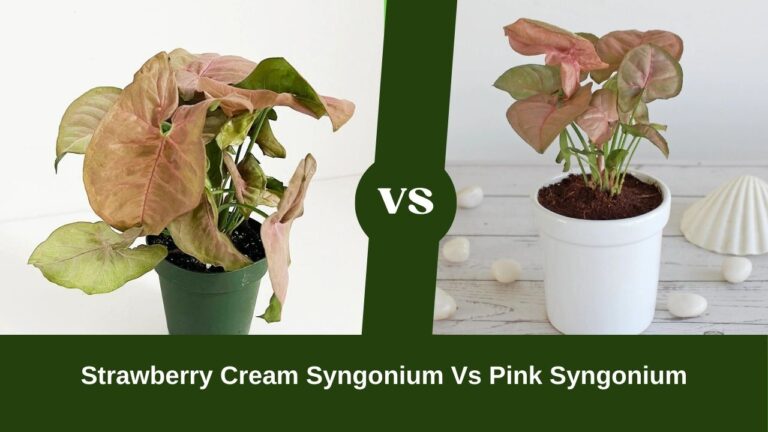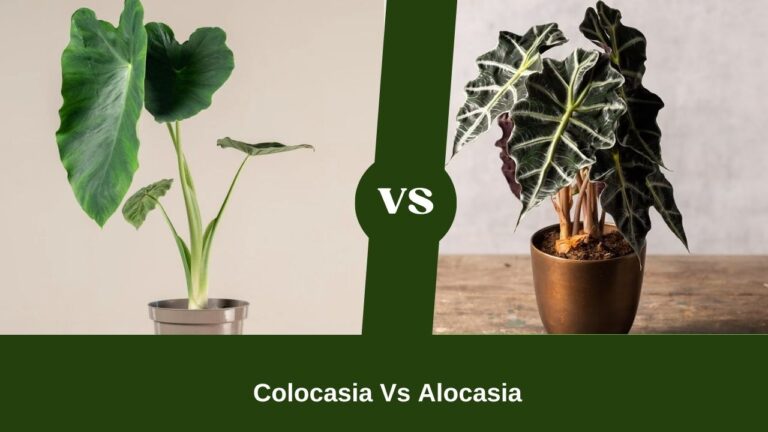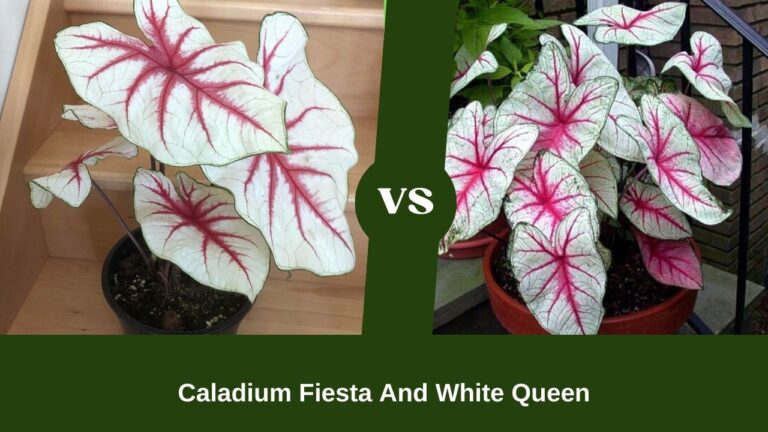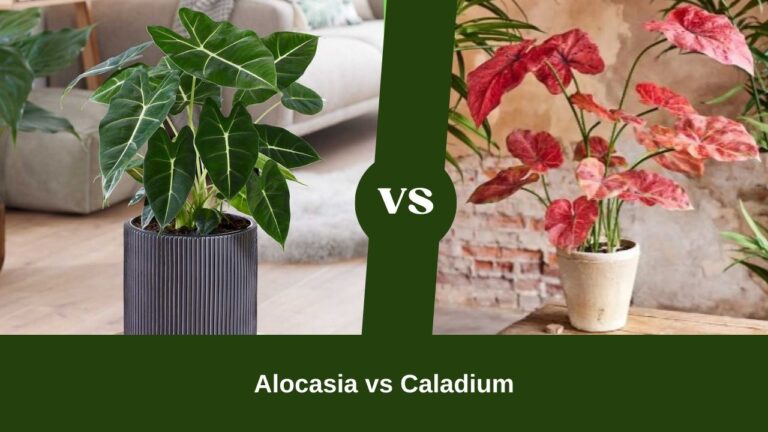Calathea Vs Stromanthe – Resolving the Puzzle!
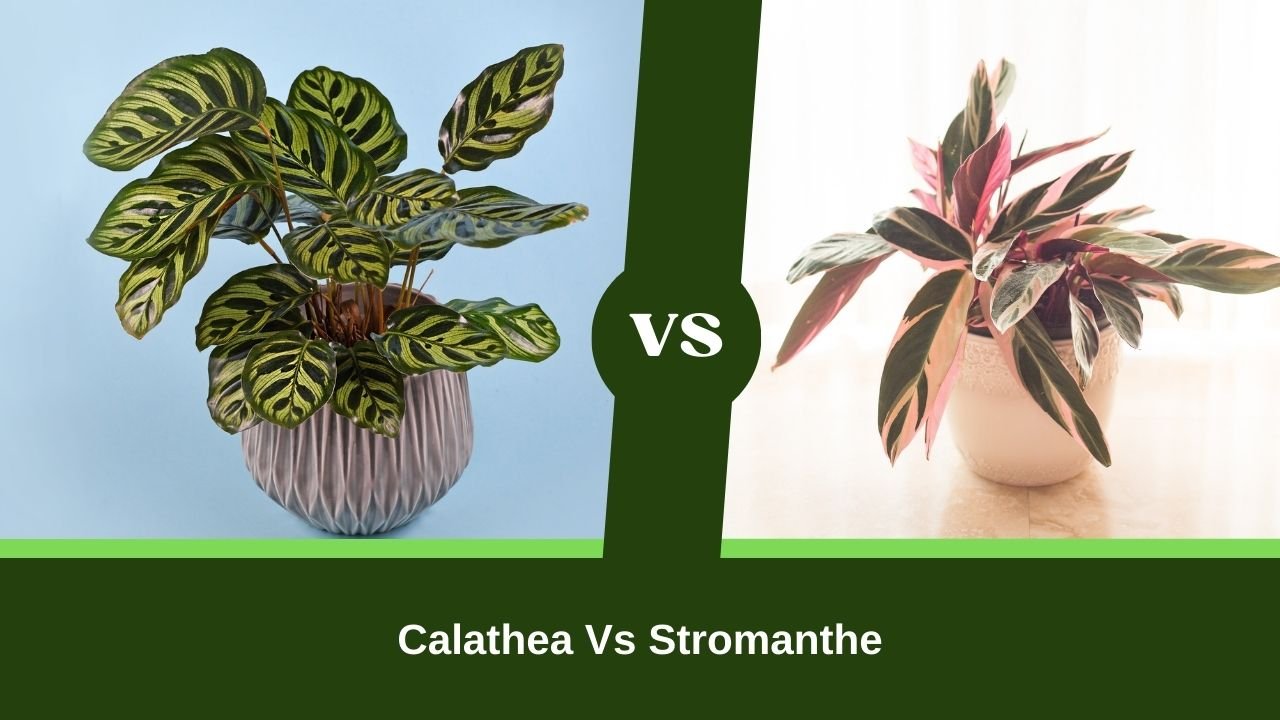
Calathea and Stromanthe are both stunning houseplants, but they differ in their care requirements and visual appeal.
So, what are the differences between Calathea and Stromanthe? If your choice depends on the Calathea vs. Stromanthe debate know their basic lighting requirement and caring tips. Calathea plants demand high humidity and indirect light, whereas Stromanthe can tolerate lower humidity levels and direct light.
In the forthcoming sections, I will explore these differences in detail, providing practical tips for nurturing these plants.
Table of Contents
Calathea Vs Stromanthe – Scientific Profile in A Nutshell
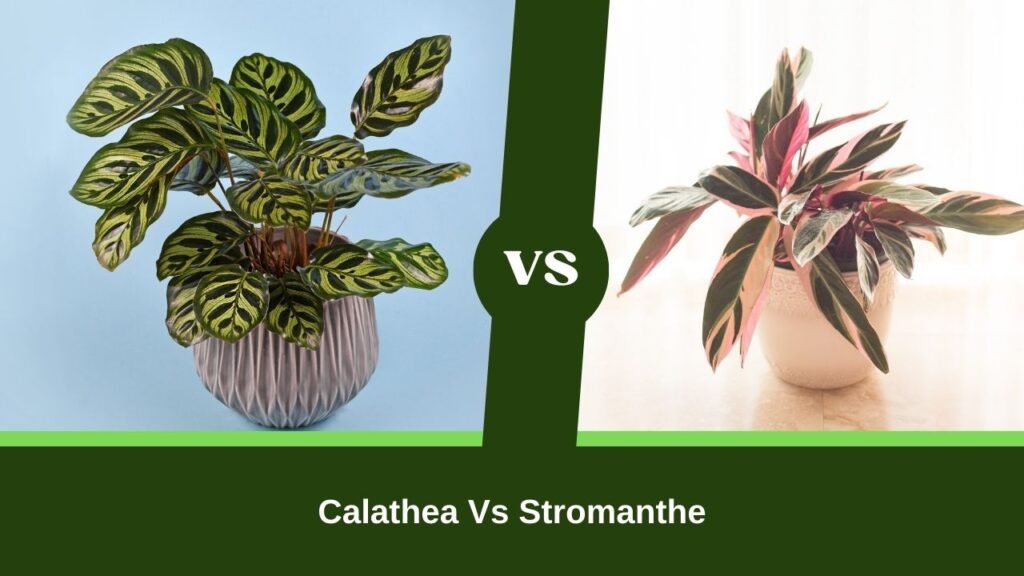
Let’s take a look at the profiles of both the plants. This will help you understand their fundamental differences.
| Criteria | Calathea | Stromanthe |
| Common Name | Rattlesnake plants | Never-Never Plant |
| Scientific Name | Calathea (Goeppertia) sp | Stromanthe sanguinea ‘Triostar’ |
| Family | Marantaceae | Marantaceae |
| Plant Type | Tropical Houseplant | Tropical Houseplant |
| Toxicity | Non-Toxic to Pets | Non-Toxic to Pets |
| Life Time | Perennial | Perennial |
Does Calathea And Stromanthe Have Different Appearances?
Yes, they’re slightly different from each other, in terms of look.
Let’s have a quick look at whether or not they’re different from each other in different appearance parameters.
| Criteria | Calathea | Stromanthe | Verdict |
| Size | Typically grows to 1-2 feet in height | Reaches 2-3 feet in height | Almost same |
| Leaves | Large, decorative, often variegated | Large, dramatic, multicolored leaves. | Almost Same |
| Flower | Orange-colored flowers. | pinkish red with white flowers | Different |
| Root | Fibrous root system | Fibrous root system | Same |
| Stems and Bark | Mostly upright with no woody stems | Mostly upright with no woody stems | Same |
| Growth Habit | grow fairly slowly | Clumping, bushy | Different |
I guess, you’ve already seen that these tropical cousins share a lot in common –
- Vividly patterned leaves
- Beautiful blooms,
- A preference for warm, humid conditions.
But they also have some key differences that set them apart.
In general, both calathea and stromanthe are known for their gorgeously colorful leaves that look like works of art. Unique stripes, spots, and splotches in shades of green, pink, red, and white make their foliage really stand out.
One of the main differences is their size and growth habit. Calathea is the more compact option, reaching just 1-2 feet tall. It grows at a steady, graceful pace. Meanwhile, stromanthe is the taller cousin, stretching 2-3 feet high with its clumping, bushy form.
The leaves also differ slightly – calathea’s are generally a bit larger and rounder. Stromanthe leaves tend to be long and lance-shaped.
So, calathea is better for small spaces, while stromanthe makes a big, bold statement.
Do Calathea And Stromanthe require Different Care Levels?
No. Not significantly. Here’s how.
Light Needs (Slightly Different)
When it comes to lighting conditions, calathea and stromanthe have slightly different preferences.
- Calathea does best in an area with moderately bright, filtered light. Direct hot sunlight will scorch its leaves, but too much shade will cause weak growth. It wants that perfect balance between sun and shade. A spot near an east-facing window or bright office setting suits it well.
- Stromanthe is a bit more particular, requiring a location with bright but indirect light at all times. It thrives in shady spots illuminated by a north or east window. Too much direct sun will fade and dry out its foliage. But dark corners will make it struggle.
Watering Requirements (Same)
While calathea and stromanthe vary in lighting needs, their watering requirements are quite similar.
Both plants need consistently moist soil to thrive. Allowing the soil to completely dry out very often will cause lower leaves to brown, curl, and crisp.
However, you also don’t want soggy, waterlogged soil, which invites root rot. The key is sticking to a routine watering schedule. Check the soil regularly and water when the top few inches become dry. Be sure the pot has drainage holes too.
Temperature and Humidity (Calathea Seeks Tropical Conditions)
In this stage, Calathea is quite different. It leans more tropical while stromanthe is less fussy.
Calathea does best with warm temps between 65-80°F and appreciates high humidity. The humidifier may need to run frequently to keep its leaves happy in dry indoor air.
Stromanthe prefers slightly cooler temps in the 65-75°F range and handles moderate humidity just fine. Though higher humidity is always appreciated!
Recommended articles:
Conclusion
Choosing between Calathea and Stromanthe ultimately depends on your preferences and the environment you can provide.
If you’re a fan of intricate, variegated leaves and enjoy a plant that grows at a moderate pace, Calathea is a fantastic choice.
On the other hand, if you want a plant with dramatic, multicolored leaves that prefers a slightly different light setting and can handle moderate humidity, Stromanthe might be your go-to.
The choice is yours.


